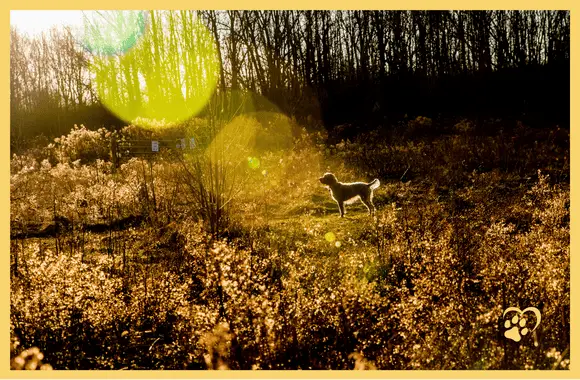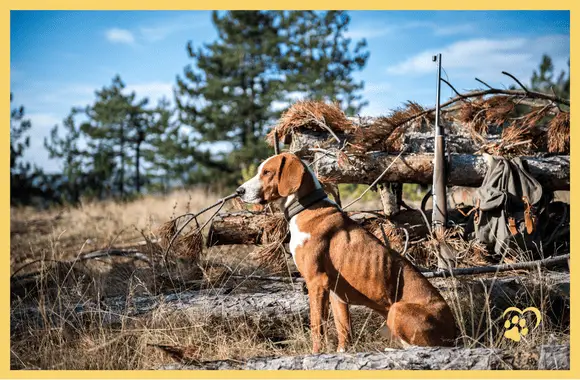The relationship between handler and hunting dog is based on trust and respect. The handler must be able to recognize and respect his dog's needs and limits, while the dog must be able to trust that his handler will be there for him in any situation. This mutual responsibility forms the basis for a strong bond that develops and deepens over time. Communication between handler and dog plays a central role. Through specific training and the use of body language and verbal signals, both partners learn to understand each other better and to communicate effectively.
The importance of the bond between handler and hunting dog cannot be underestimated. A sustainable and trusting relationship is the basis for successful training and ensures that man and animal can work together harmoniously and efficiently. The development of a sustainable bond should therefore always be the focus of training and be promoted through targeted measures and exercises. Only in this way can handler and hunting dog develop their full potential together and build a successful partnership based on trust, respect and understanding.
Creating the basis: Trust and respect
Successful cooperation between handler and hunting dog is based on a solid foundation of trust and respect. These two essential elements form the basis for a strong bond, which is the foundation for effective and harmonious cooperation during training and in everyday life. Handler and hunting dog are equally responsible for building and maintaining this important relationship.
Trust is the basis for a successful relationship. In order for the hunting dog to trust its handler, the latter must offer it security, protection and guidance. The dog must be able to rely on his handler to be there for him in every situation, to respond to his needs and to support him when he is uncertain. The handler can strengthen his dog's trust through clear, consistent and loving leadership that is oriented to the dog's individual needs. Likewise, it is important for the handler to pay attention to his dog's body language and signals in order to better respond to his needs.
More info about hunting dog breeds offers our article When the nose sets the tone: 21 hunting dogs in portrait 

Communication: Understanding and being understood
Clear communication is the key to a successful relationship between handler and hunting dog. To build a strong bond and facilitate training, it is important that both partners understand and are understood by each other. This requires that the handler is able to interpret and respond appropriately to his dog's body language and signals. At the same time, the hunting dog must be able to understand and implement the instructions and expectations of its handler.
To ensure successful communication, the handler should familiarize himself with the basics of the dog's body language and communication. This will enable him to better recognize and respond to the needs, emotions and desires of his hunting dog. Likewise, it is helpful to reflect on one's own communication style and make sure to communicate clearly and consistently with the dog.
An important aspect of communication between handler and hunting dog is training. Through specific exercises and instructions, the dog learns to understand and execute the signals and commands of its handler. In doing so, the training methods should always be positive and tailored to the dog's individual needs in order to maximize learning success and strengthen the bond.
In addition, the handler should also pay attention to nonverbal communication such as body language, gestures and facial expressions. These can also help to improve the bond between handler and hunting dog and promote mutual understanding.
Open and honest communication between handler and hunting dog is critical to building a strong bond and training success. By learning to better understand and adjust to each other, both partners can grow together and develop a harmonious partnership.
Joint activities strengthen the bond
A strong bond between handler and hunting dog is created through time spent together, taking into account both the physical and emotional needs of the dog. Joint activities foster communication, understanding and trust, which in turn form the basis for successful training and cooperation. Here are some examples of joint activities that can strengthen the bond between handler and hunting dog:
- Walks in natureExploring the environment together offers many stimuli and strengthens the bond through shared experiences. The dog gets to know and explore his environment better, the handler can understand his dog better and respond to his needs.
- Retrieval exercises: Promote interaction between handler and hunting dog and use the dog's natural instincts. Retrieving teaches the dog to listen to commands and search for objects, which promotes mental and physical fitness and strengthens the team spirit between dog and handler.
- Tracking work: Trains the hunting dog's nose and intensifies the cooperation between handler and dog. By following a track, the dog's concentration is enhanced and he learns to rely on his handler, who gives him instructions and helps him to use his skills effectively.
- Search and sniff games: Mentally challenge the hunting dog and promote understanding of communication between handler and dog. These games are a great way to train the dog's natural senses while providing a fun and challenging activity for both parties.
- Obedience training: Through specific exercises, communication and trust between handler and hunting dog is strengthened. By continuously practicing commands and rewarding the dog for correct behavior, the dog learns to listen to his handler and develop trust in his leadership.
- Relaxing together: Cuddling, quietly observing nature or sharing relaxing moments together promote emotional bonding. These quiet and relaxed activities create a trusting atmosphere where handler and dog can get closer and build a deeper bond.
Would you like to learn more about training: You are sure to find what you are looking for in our article on dog sports: How your dog and you can get fit together
These shared activities and experiences help keep the relationship between handler and hunting dog alive and strong. They provide opportunities for learning, growing and discovering together and form the basis for a trusting, respectful and harmonious partnership that has a positive impact on training and daily life together.

Patience and consistency: keys to success
When training hunting dogs, patience and consistency are crucial factors for success. The handler should always remain calm and persistent, even if progress seems slow at first or the dog does not immediately exhibit the desired behaviors. It is important to understand that learning for dogs is a process that takes time and practice. The handler should always use positive reinforcement and reward their dog for desired behavior to make training effective and sustainable.
Consistency means setting clear rules and expectations and following them consistently. This creates a safe environment for the dog to understand what is expected of him and how he should behave. Consistent leadership and communication help avoid misunderstandings and frustrations and allow the dog to build trust with his handler.
Patience and consistency lead to a stronger bond between handler and hunting dog and lay the foundation for successful training. It is crucial that the handler considers the dog's individual needs and abilities and adapts the training accordingly. With patience and consistency, the handler can create the best conditions for effective cooperation and harmonious interaction with his hunting dog.
Conclusion: A strong bond as the basis for successful hunting dog training
A strong bond between handler and hunting dog is the foundation for successful training. This relationship, based on trust, respect and mutual understanding, enables effective communication and cooperation during training and in the hunting field. To build and strengthen this bond, joint activities, consistent leadership and patience are critical.
The handler should constantly work to improve their skills in communicating and interacting with their hunting dog and be aware that training is a continuous process that requires time, commitment and flexibility. By taking into account the individual needs and abilities of your dog and adapting the training accordingly, you can create an optimal learning environment and ensure the best conditions for successful hunting dog training.
Overall, a strong bond not only contributes to harmonious togetherness in everyday life, but also forms the basis for a well-trained, reliable and powerful hunting dog that can perform its tasks effectively and safely. Through continuous relationship and training work, handler and hunting dog can grow together and form a well-rehearsed team that is ideally equipped for the many challenges of hunting.
You want to read more? Here comes our article The influence of hunting instinct on dog training . just right. Read all the background on this topic!
. just right. Read all the background on this topic!
